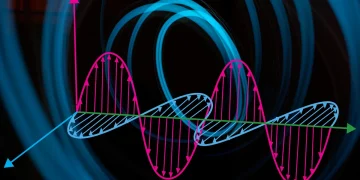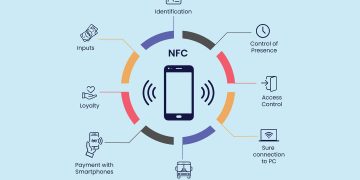NFC, or Near Field Communication, is a wireless communication technology that allows short-range data exchange between devices when they are brought close to each other, typically within a few centimeters. It’s a subset of radio-frequency identification (RFID) technology and is often used for contactless payments, data transfer, and various other applications.
NFC operates on the principles of electromagnetic induction, where one device generates a radio frequency (RF) field that can power another device and enable data transfer. NFC technology is commonly used in smartphones, tablets, and other electronic devices to enable various functionalities, including:
- Contactless Payments: NFC technology is widely used for mobile payment systems like Apple Pay, Google Pay, and Samsung Pay. By tapping their smartphones or contactless cards on NFC-enabled payment terminals, users can securely make transactions without physical contact.
- Data Transfer: NFC allows users to share small amounts of data, such as contacts, photos, or links, between two NFC-equipped devices. This is often done by simply tapping the devices together or bringing them close to each other.
- Access Control: NFC is used for security purposes, allowing access to buildings, rooms, or electronic devices through NFC-enabled access cards or badges.
- Public Transport: Many public transportation systems utilize NFC cards for fare payments. Passengers can tap their NFC-enabled cards on readers to gain entry to buses, trains, and subways.
- Smart Tags: NFC tags, small programmable chips, can be embedded in physical objects or stickers. When an NFC-enabled device comes in close proximity to these tags, it can trigger specific actions like opening a website, launching an app, or adjusting device settings.
- Bluetooth Pairing: NFC can simplify the process of pairing Bluetooth devices by tapping them together, automatically initiating the pairing process.
- Healthcare and Identification: NFC technology can be used in medical applications, such as tracking patient data, medications, and medical equipment. It’s also used in identification cards for secure access to facilities and systems.
NFC technology operates over short distances, making it more secure and less susceptible to interference compared to technologies that operate over longer ranges. Its applications continue to expand as more devices become NFC-enabled, and it plays a significant role in the growing field of the Internet of Things (IoT).






























